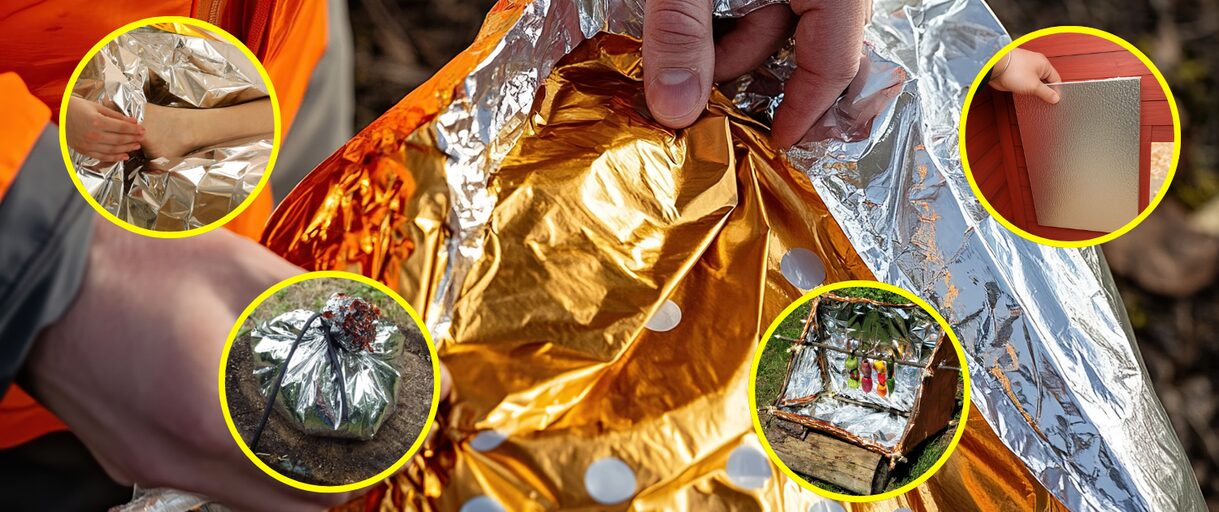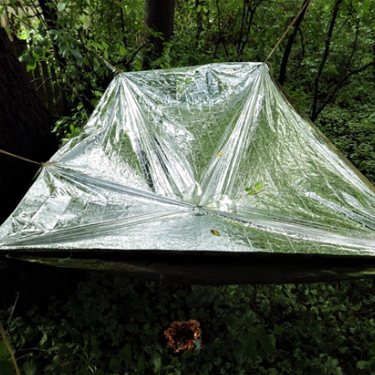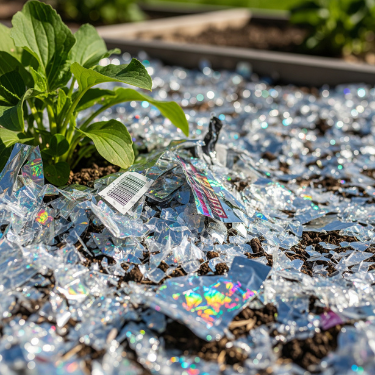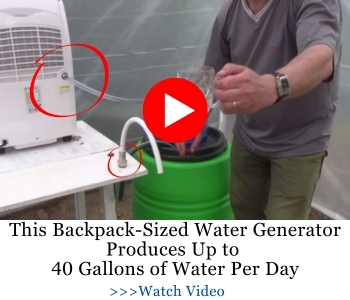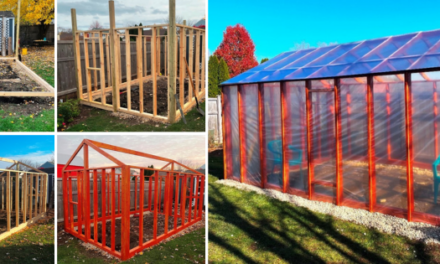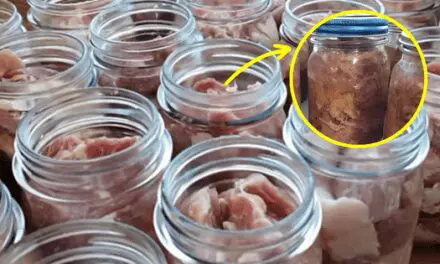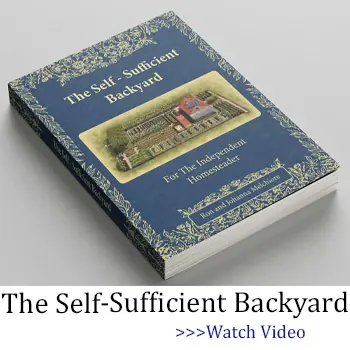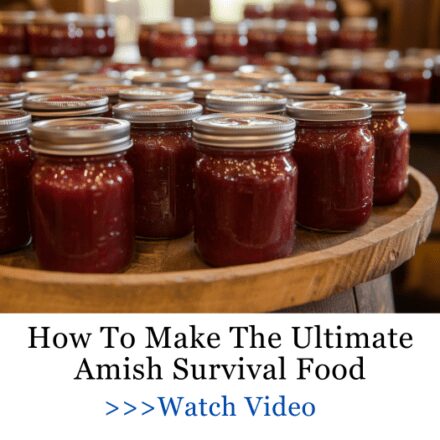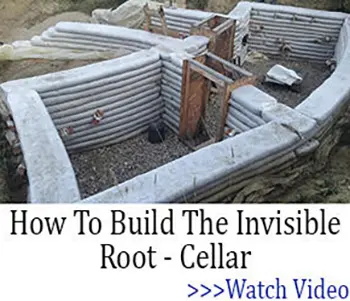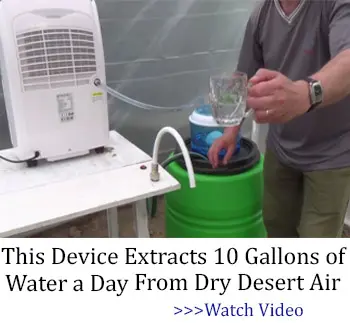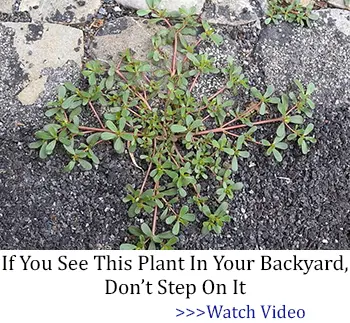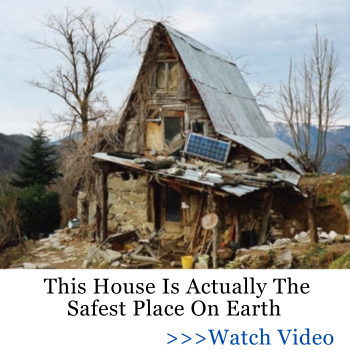Mylar blankets were once referred to as “space” blankets. That’s because the concept originated with NASA during the space program due to its ability to capture and reflect heat.
They’re usually 4 x 8 feet and fold to the size of a handkerchief. They’re also very inexpensive and the fact that they are waterproof and reflective provide a lot of possibilities.
We’re going to cover some creative and innovative was to use a Mylar blanket to accomplish a variety of tasks, especially if you need to improvise something quickly without a lot of fuss.
In some ways it makes sense to simply carry one of these Mylar blankets in your back pocket at certain times. They’re very compact and if you’re caught in the rain far from the house it makes for a quick poncho. Here are some of the other uses:
1. Emergency Insulation for Coops and Barns
When a sudden cold snap hits, your animals don’t always have the luxury of time to adjust, and neither do you. A simple Mylar blanket can be a real lifesaver. They are designed to reflect body heat back toward its source, which makes them perfect for holding warmth inside a coop or barn when temperatures plunge.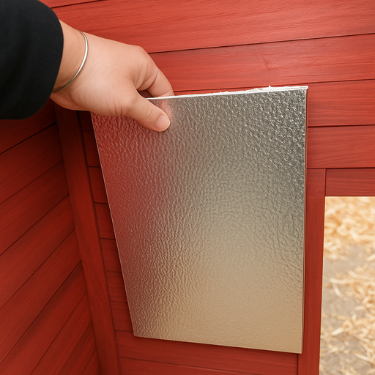
If you have a chicken coop, you can staple or tape Mylar blankets to the inside walls and ceiling with the shiny side facing in. Even a single layer can bounce up to 90% of the heat generated by your flock right back into the space. For larger livestock areas, it’s best to focus on smaller, enclosed spots, like individual stalls or a corner where animals tend to huddle. That’s because Mylar works best in confined spaces.
If you don’t have time to fully line walls, even hanging a blanket like a curtain over drafty doors or windows can make a noticeable difference. The key is to create a reflective barrier that keeps heat from escaping while still leaving enough ventilation to prevent moisture build-up.
This trick isn’t just for the dead of winter either. During hot summer months, flip the approach by hanging Mylar blankets outside windows or over openings with the shiny side facing out. This reflects the sun’s harsh rays away from your coop or barn, helping keep the interior cooler and reducing heat stress on your animals. Mylar blankets also make a great stopgap solution during transitional seasons, when it’s too early to break out the permanent insulation but too cold to leave animals unprotected.
And you can also use them in predator management. You can use strips of Mylar to create shiny, moving scare strips around your coop or garden, deterring curious predators like raccoons and hawks. Even better, Mylar can be incorporated into predator traps to reflect light and lure animals in, giving you an extra edge in protecting your flock.
For extra protection, you could also make an automatic chicken predator trap. This isn’t your average DIY project. It’s a trap that works 24/7, catching the sneakiest raccoons and rats without you even being there. And you can learn how to build it yourself right here
2. Solar Reflector Oven
A solar reflector oven concentrates the sun’s rays and can trap a significant amount of heat. On a sunny and warm day, you might even be able to boil water. It’s a great backup in the event of a power outage and also makes sense in a wilderness survival situation.
The framework is made from sticks tied together with twine or natural cordage to form a framework.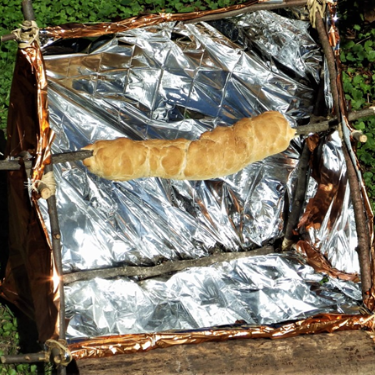
2 additional sticks attached to the side let you tilt the reflector oven up to the noon day sun and to support a center crossbar to hold pots or foods. Lay the frame on the ground and cut the Mylar sheet to fit the frame remembering you need to fold half of the sheet up onto the frame.
➡️ How to Build the Oven That Cooks Without Fire, Fuel, Smell, or Smoke
The Mylar sheet is then attached to the sticks with occasional ties of twine or cordage.
A stick across the middle can suspend a pot of water, food on sticks or even food contained in Mylar bags.
The only trick with solar reflector ovens is that you need to shift them to follow the sun for any extended cooking time.
When it is directly pointed at the sun you will achieve the highest temperatures. You may also need to tilt the oven when the sun is directly overhead. The combination of reflected sunlight and a high ambient temperature should give you surprising results.
I got the inspiration for this project from a book I read called No Grid Survival Projects. It is full of practical ideas for off-grid living and emergency preparedness and it goes into great detail about building simple solar ovens like this one, along with other 70+ ingenious projects to survive a world without electricity.
3. Rain Catcher
Whether you’re in a wilderness area of need to collect water on a remote part of your property for watering a distant garden bed or hanging pots, suspending a Mylar blanket between some trees can catch the rain every time. All you have to do is scoop out the water and you can even make a ladle with a piece of Mylar.
To make the ladle, bend a thin branch around a stick for a handle and bind it to the handle to form a bow. You can then place a small piece of Mylar in the bowed stick and attach it to the handle for a quick scooper from your rain catcher.
If taking care of your water stockpile sounds like too much work, you can always try this DIY backpack-sized water generator.
4. Garden Frost Protector
Few things are more disheartening than walking out to your garden after a chilly night and seeing tender plants wilted from frost. A Mylar blanket can act as a quick shield to save your crops when the temperature suddenly drops.
On nights when frost is in the forecast, drape a Mylar blanket loosely over your garden beds or individual plants. The reflective surface helps trap the warmth rising from the soil while bouncing frost-causing cold away. For best results, set a few stakes or hoops to keep the blanket from pressing directly on delicate leaves.
In the morning, remove the blanket as soon as the sun comes up to prevent condensation build-up, which can damage plants if left sitting. This method is especially useful for protecting seedlings, late-season vegetables, or tender herbs that don’t handle cold well.
It’s a simple, inexpensive way to buy your plants a fighting chance during unpredictable spring or fall nights—and it can save you from losing an entire bed of crops to one unexpected frost.
The Amish community is still using some of these techniques and they are as self-sufficient as you can get. I could only make a short resume here about the Amish ingenious ways of gardening, but it would only scratch the surface. That’s why I recommend you check out this guide written by Eddie Swartzentruber, a real Amish person who shares secrets that can help you too in your homestead.
5. Quick Cordage
You never know when you’ll need a little rope, and a Mylar blanket can give you more than you’ll need. Cutting a strip of Mylar about 6-inches wide and 8 feet long gives you a chance to improvise cordage if you’re out and about and need to tie something quickly. You could even use it to improvise a dog leash for a lost dog you finally found on the upper 40.
You can also braid those long cords with a 3-way braid to enhance the strength.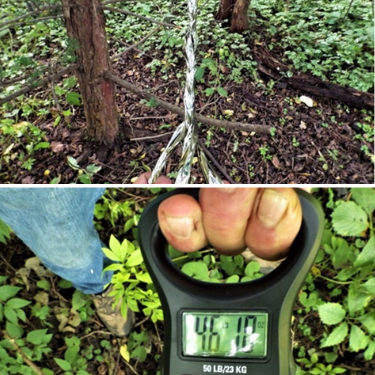
Tie the three strips to a tree and braid as you go.
And if you need something stronger -braid those strands again by tying them to a vertical branch and braid again.
The result is surprisingly strong and is easy to work with and tie off.
A fish scale pulling on the Mylar cordage gives some indication of its strength.
This measured up to 46 pounds and it still didn’t break.
If you are out foraging and you don’t have anything on you, there are also some common plants you can easily turn into strong, natural cordage. You can learn all about them from here, along with hundreds of other tricks that will help you turn any remote setting into your home, including the wilderness.
6. Long-Term Food Storage & Heat Retention for Fermentation Projects
One of the most practical uses for a Mylar blanket is turning it into an extra barrier for your pantry staples. Even if you’re already storing grains, beans, or flour in buckets or bins, moisture and oxygen can still creep in over time. Adding a layer of Mylar creates an inexpensive, extra shield against both.
Cut the blanket into sheets and line the inside of your storage container before pouring in your dry goods. Once filled, fold the Mylar over the top before sealing the lid. This added layer helps block light, keeps out residual moisture, and slows oxidation, giving your food a much longer shelf life.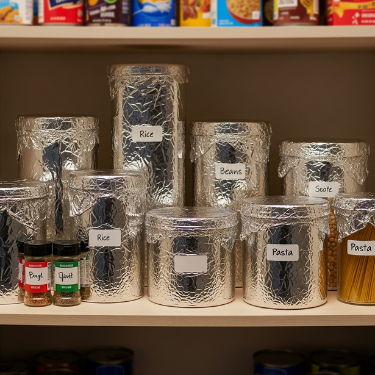
For smaller quantities, you can wrap individual bags of rice or flour in Mylar and store them in bins or totes. It’s a simple step that can mean the difference between fresh, usable food and a ruined stash when you need it most. Trust me, a few Mylar blankets can go a long way toward keeping your hard-earned food secure for the long haul.
The same heat-retaining qualities that protect your food also make Mylar useful for fermentation projects. In cooler months, wrapping crocks or jars with a Mylar blanket helps hold a stable temperature, allowing ferments like sauerkraut, kimchi, or sourdough starters to thrive even when the ambient temperature drops. It’s a simple, low-cost trick that can keep your ferments active and your preserved foods fresh for the long haul.
I also use an old Amish fermentation technique that I found in this online course where the instructor is Eddie Swartzentruber who grew up in an Amish community, but left when he was just 17. The Amish have many ingenious methods you’ll find interesting, including one that will help you grow twice as much food on the same piece of land. And everything is explained in great detail here, where he’s sharing their best-kept secrets.
7. DIY Solar Water Pasteurizer
Clean water is one of the most valuable resources on any homestead, especially in an emergency. A Mylar blanket can help you harness the sun to make small amounts of water safe to drink without fuel or electricity.
To create a simple solar pasteurizer, set a black or dark-colored container of water inside a shallow box or pan. Line the bottom and sides with a Mylar blanket, shiny side facing up, to reflect sunlight onto the container from multiple angles. Cover the top loosely with a piece of clear glass or plastic to trap heat like a mini greenhouse.
Unlike boiling, pasteurizing doesn’t require water to reach 212°F. Raising it to about 160°F for 30 minutes is enough to kill harmful pathogens. On a sunny day, this setup can reach that temperature in just a few hours.
It’s not a high-output system, but in a pinch, it can make the difference between having safe drinking water or risking illness when other purification methods aren’t available.
Did you know that there is also an ingenious way to filter water using only a sandwich bag?
8.Seed Germination Booster
Getting seeds to sprout quickly and consistently is key to a successful garden, especially when starting indoors or in cooler climates. A Mylar blanket can be a simple yet effective tool to give your seedlings a head start.
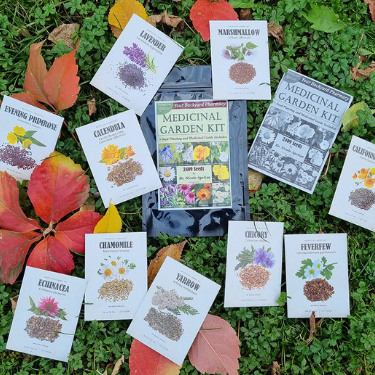
By placing a Mylar sheet around or under your seed trays, you create a reflective environment that bounces light and warmth back onto the seeds. This concentrated heat helps maintain a more consistent temperature, which encourages faster germination and stronger seedlings.
This method works particularly well for medicinal seeds, as it gives them the gentle warmth and light they need to sprout strong and healthy. Using a Mylar blanket to boost germination can even help lengthen your planting season, letting you start seeds earlier in the spring or keep going later into the fall. And with some grow lights, you can even get a head start indoors during colder months. I found a great kit with 4,818 high-quality, NON-GMO seeds packaged in the US, that you can turn into hundreds of powerful natural remedies without spending a dime at the pharmacy anymore. It’s called the Medicinal Garden Kit and you can find it here.
For best results, set up your trays in a sunny window or under grow lights, and position Mylar so it doesn’t block airflow but maximizes reflection. The added warmth can make a big difference during chilly spring mornings or in unheated rooms, helping you get your garden going sooner.
9. Remote and Quick Campsite
Mylar blankets can let you set up a quick campsite on a remote part of your property or even in a survival situation. This campsite has it all including a lean-to, a Mylar sleeping bag, a water trough for washing up, a Mylar plate on a stump and even the solar reflector oven.
You can even set up the solar reflector oven to reflect heat from the campfire into your lean-to.
10. Emergency Heat Reflector for Propane Heaters
When winter chills settle in, every bit of warmth counts—especially in barns, workshops, or other outbuildings where propane heaters are your main source of heat. A Mylar blanket can be a game-changer by reflecting precious heat back into the space instead of letting it escape through walls or open areas.
Simply hang or tape a Mylar sheet behind your propane heater with the shiny side facing toward the room. This reflective barrier bounces heat away from the wall and radiates it back where your animals or workspace need it most. The result is a noticeable boost in warmth and more efficient fuel use.
11. Emergency Greenhouse Repair
Storms can strike unexpectedly, tearing holes or ripping plastic sheeting on your greenhouse just when your plants need protection most. When a quick fix is needed, a Mylar blanket can step in as an effective temporary patch.
Simply cut a piece of Mylar large enough to cover the damaged area and secure it tightly with clips, tape, or bungee cords. The reflective surface helps retain heat and light inside the greenhouse, minimizing the chill that damaged plastic would otherwise let in.
While it’s not a permanent solution, this quick patch buys you valuable time to gather materials and make proper repairs without sacrificing your seedlings or tender crops to cold drafts or weather damage.
Keeping a folded Mylar blanket on hand for emergencies like this is a smart move for any homesteader who relies on greenhouse growing.
12. DIY Reflective Window Insulation
Windows are often the weakest link in your home’s insulation, letting heat escape in winter and pouring in unwanted warmth during summer. A Mylar blanket can be an easy, affordable way to improve comfort year-round.
During colder months, tape or secure Mylar sheets to the inside of your windows with the shiny side facing inward. This reflective layer bounces radiant heat back into your room, helping reduce heat loss and lowering heating costs. It’s especially handy in drafty or older buildings where window upgrades aren’t practical.
In summer, flip the Mylar so the shiny side faces outward. This setup reflects sunlight away from your windows, keeping interiors cooler and reducing the need for air conditioning. It’s a simple way to cut down on heat gain during the hottest parts of the day.
Because Mylar is lightweight and easy to apply or remove, you can adjust your window insulation seasonally or even daily as the weather changes.
13. Reflective Mulch for Weed Control and Heat Retention
Mulching is a tried-and-true garden practice, but using a Mylar blanket as reflective mulch takes it up a notch. When laid around your plants, Mylar reflects sunlight onto the undersides of leaves, which can boost photosynthesis and promote healthier growth.
At the same time, the reflective surface helps suppress weeds by blocking sunlight from reaching weed seeds in the soil. This natural weed control reduces your need for chemical herbicides or constant hand-weeding—a win for both your garden and the environment.
Additionally, Mylar mulch traps warmth in the soil by reflecting heat back down, which is especially helpful for heat-loving crops like tomatoes and peppers. This extra warmth can extend your growing season by protecting roots from chilly nights and promoting faster fruit ripening.
Lightweight and reusable, Mylar mulch is an innovative tool for homesteaders aiming to increase garden productivity while cutting down on labor.
14. DIY First Aid For Bleeding and Wounds
Accidents on the homestead can happen fast, and sometimes you’re too far from help to wait for proper supplies. A Mylar blanket can double as both a sterile barrier and emergency bleeding control.
For open wounds, cut or tear a clean section of Mylar and place it loosely over the injury after applying a dressing or clean cloth. Mylar acts as a waterproof shield, keeping dirt, moisture, and debris out while you tend to the wound or transport the injured person. Because it’s non-porous, it also helps retain warmth, which is vital for preventing shock after blood loss.
If bleeding is severe and you have no proper tourniquet, a Mylar blanket can step in there, too. Tear or cut a long strip several inches wide, wrap it firmly over clothing or cloth above the wound, and use a stick or rod to twist it tight. Tie it off to maintain pressure until medical care is available. Mylar isn’t ideal for direct skin contact under tension, but over fabric, it provides surprising strength in an emergency.
Keeping one or two Mylar blankets in your barn, workshop, and first aid kit ensures you have a lightweight, sterile backup when every second counts.
There are also many herbal remedies you can make out of common backyard plants and store in your pantry for emergencies. When blood won’t stop flowing or an injury risks infection, having a jar of Yarrow Stop-Bleeding Powder or a bottle of Calendula First Aid Spray on hand can mean the difference between a quick recovery and a trip to the ER you can’t make in time. You can find the recipes for both of them, along with 250+ others, right here.
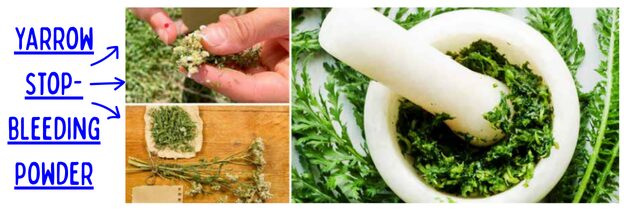
For when I don’t have the time to mix something up from scratch, I also keep this All-Purpose Salve in my kit. It’s crafted with three powerhouse herbs traditionally used to speed up healing, calm inflammation, and protect against infection. I’ve used it on everything from cuts, scrapes, burns, and even cracked skin. Basically, it’s a salve that covers a lot of ground in any homestead first-aid kit, so I’d recommend having it in your pocket, no matter if you’re gardening in your backyard or out foraging around your property. You never know when you’ll need it.
15. Foraging Bag
You never know when you’re going to come across that outcrop of wild blackberries or a Mulberry tree loaded with mulberries. It’s easy to cut a circle of Mylar and form it into a bag to gather, collect and transport any wild edibles you happen to come across on your property or in the wild.
16. Canteen
The same concept of cutting a circle and tying it off with some twine can make a serviceable canteen. Put the shiny side out to reflect the sun and help keep the water cool.
And yes, you can take the canteen with you as you continue to wander.
Take 2!
Once you start to appreciate how many things you can accomplish with a simple Mylar blanket you might want to take two with you whenever you wander around your property and particularly when you step into the wilderness. In some ways it may be one of the best all around survival tools no matter where your travels may take you whether it’s wandering across your homestead or heading for the hills.
Survival Tricks Learned from Homeless People
How To Build An Endless Hot Water System Without Electricity (Video)
DIY Tools You Can Make from Bark, Rocks and Trees

